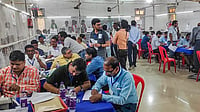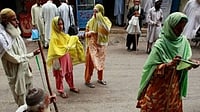
Indeed, capital expenditure, whether it is by way of companies setting up additional capacities, or government putting infrastructure in place, is yielding results. "The interest rate hike has not had much impact on the capital expenditure cycle in the short term, firms have had to continue investment because demand has remained strong," says one analyst. So, the investment cycle, powered by strong domestic consumption, has led growth.
The Sensex is up 16 per cent in the second quarter and 31 per cent this year. Operating profits will grow at 39 per cent and sales growth will be 27 per cent for Q2, according to Motilal Oswal Securities. BRICS Securities feels toplines will grow at around 31 per cent and bottomlines slightly higher around 34 per cent in Q2. "Companies tried different things to control prices and keep input costs down. Also, the continuing capital expenditure cycle brought scale, bringing down per unit costs," says Amitabh Chakraborty, research head atBRICS Securities. For instance, the oil price rise forced companies to optimise fuel mixes and up productivity in other ways. Ketan Karani, vice president (research), Kotak Securities, expect profits to go up 19-22 per cent in Q2. "From the data that is coming in, we expect Q2 results to beat expectations. After this, we could well see earnings upgrades across several sectors," he adds.
Are there no downsides to this story? Of course, there are. Government finances continue to be in deep red. And the small fall in global oil prices merely helped in reducing the subsidies, not a great deal of help to consumers when pass-throughs haven't fully taken place. Despite good rains, agriculture production remains an area of concern even though the Q1 showing was surprisingly good with 3.4 per cent growth. "This underscores three things. That rabi is as important a crop as kharif; non-food agricultural produce such as dairy and horticulture is becoming increasingly important and that rural growth is coming not only from agriculture. The rural economy is less dependent on agriculture now," explains Ranade. But agriculture numbers come with a big lag and the final figures may yet take away a few crucial points off the total by March, unless the next rabi produce cooperates.
Both Saumitra Chaudhuri and Siddharth Roy, economic advisors with ICRA and Tata Economic Services, respectively, would like to wait for the kharif numbers for this year before increasing the growth estimates. Advance kharif estimates for 2006-07 are the same as that of last year, which basically means rabi has to show a higher than trend rate to reach an average agricultural growth rate of around 2 per cent and this is a tall order, says Roy. "However, I tend to agree that the manufacturing and services rate of growth could be marginally higher. The real concern will be agriculture," he adds.
Even the interest rate hike could have a lagged effect on the housing and consumer durables sectors, and some of it is already visible according to some analysts. For instance, construction grew at 9.5 per cent in Q1 2006, although it has grown in double digits for the past several quarters. "We will see some lagged impact of the interest rate hike in the third and fourth quarters," says Shubhada Rao, chief economist for Yes Bank. "This is the longest capital expenditure cycle lasting four years. So, we do expect some moderation. Momentum drivers are there but going ahead, interest rates will have some impact," he adds.
All eyes will then be on governor Reddy in the run-up to the credit policy review meeting. Will he continue with or spoil the economic party? Till that time, consider what one analyst said, while reacting to IMF's Raghuram Rajan's comment that "eight per cent is indeed a very high number and we are surprised at India's strength". The analyst observed that if India can do eight per cent with such poor infrastructure, we could do 12 plus with good infrastructure. Chew on that till our next growth bulletin.






















